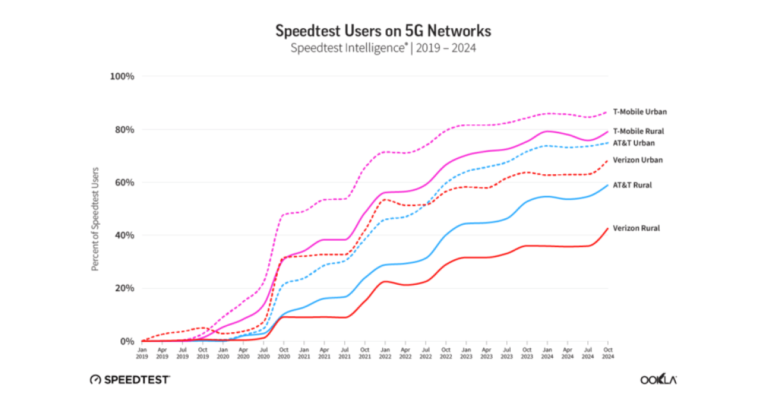Rogers Trials 5G Network Slicing in Canada, Promising Enhanced Application Performance
TORONTO, February 1, 2024 – In a significant development in Canadian telecommunications, Rogers Communications today confirmed the successful execution of a 5G network slicing trial, the first of its kind in the country. Network slicing technology promises to enhance the performance of 5G applications, bringing about a new era in network efficiency and customization.
Understanding Network Slicing: Enhancing Wireless Traffic
At its core, network slicing represents a shift in 5G network operations. Traditionally reliant on a singular pathway for wireless traffic, this technology introduces the concept of multiple ‘lanes’ or slices within the network. Each slice is uniquely tailored to enhance the performance of specific 5G applications, catering to diverse requirements such as low latency, precise location tracking, high-speed data transfer, or large capacity demands.
For instance, public safety agencies can benefit from a dedicated network slice, ensuring uninterrupted, clear communication with first responders during emergencies. Similarly, in crowded environments like concerts, network slicing allows for a specialized slice to support low-latency live streaming, alongside another slice dedicated to providing high-capacity mobile connectivity for attendees.
Rogers and Ericsson: Partners in Innovation
This trial was conducted in collaboration with Ericsson in key Canadian cities – Toronto, Montreal, and Vancouver. Utilizing Rogers’ national standalone 5G core network, first launched in 2022 as Canada’s inaugural network of its kind, the trial marked a significant milestone in the partnership between Rogers and Ericsson.
Ron McKenzie, Chief Technology and Information Officer at Rogers, highlighted the company’s unique position, “Owning a truly national radio access network gives us an unparalleled edge in offering consistent, reliable service for mission-critical applications across Canada. Network slicing is set to enhance services across public safety, residential, and business sectors, elevating our daily lives with more focused and dependable support for essential applications.”
Empowering First Responders and Expanding 5G Connectivity
A key application of this technology will be providing first responders with dedicated network priority. Additionally, Rogers plans to leverage network slicing to segregate fixed and mobile traffic on its national 5G network. This initiative is expected to boost the rollout of 5G Wireless Home Internet, especially in rural and remote areas, ensuring more consistent and reliable service for both residential and business users.
Sustained Partnership for Future-Ready 5G Solutions
Rogers’ ongoing collaboration with Ericsson, a leader in 5G technology, has recently been extended. This partnership will continue to furnish Rogers with 5G solutions as they fortify their commitment to offering Canadians the best in network technology.
Commitment to a 5G-Powered Future
Rogers’ latest announcement underscores its commitment to developing a robust, made-in-Canada 5G ecosystem. The company’s national network investments have established it as Canada’s most extensive and reliable 5G network, now encompassing over 2,200 communities. In 2023, Rogers was recognized as the best wireless network in Canada for the fifth consecutive year by global network benchmarking leader umlaut. Additionally, the company remains invested in 5G research collaborations with the University of British Columbia and the University of Waterloo.
About Rogers
As Canada’s leading provider of wireless, cable, and media services, Rogers Communications offers a wide range of communication and entertainment solutions to consumers and businesses nationwide. The company’s shares are traded on the Toronto Stock Exchange (TSX: RCI.A and RCI.B) and the New York Stock Exchange (NYSE: RCI). For further information, visit rogers.com.






















